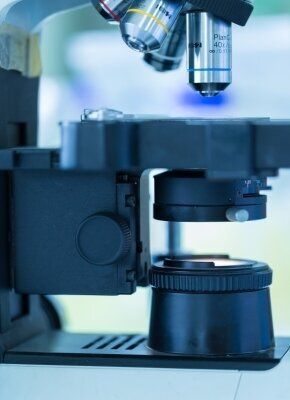
*Victor Roy [2009] is a Gates Cambridge scholar as a PhD student in sociology and political economy at the University of Cambridge focusing on innovation policy. He is also an MD candidate at Northwestern's Feinberg School of Medicine and is a Paul and Daisy Soros Fellow for New Americans. Follow him on Twitter: @victorroy. Picture credit: Photokanok and http://www.freedigitalphotos.com.
Seventy years ago today, the world witnessed two unprecedented mobilisations.
Remembering both offers insights for our time.
On the shores of Normandy, leaders gather today to remember the pivotal Allied invasion that re-drew the battle lines of World War II. Nearly 160,000 troops crossed the English Channel on June 6, 1944, making it the largest seaborne invasion in history. Yet another deployment had also occurred in tandem: the first mass production of penicillin. Between 1942 and 1944, the US went from possessing enough penicillin for only 10 patients to producing over 400 million doses in time for D-Day.
The tale of penicillin
While Alexander Fleming is remembered as the discoverer of penicillin, many actors - from scientists, government employees, engineers, to drug companies - played midwife to this new drug. Three highlights emerge from penicillin's journey from chemical compound to mass delivery.
- First, the discovery process happened in fits and starts: after Fleming's accidental discovery of the penicillin compound in September of 1928, further development of the compound did not occur until a decade later, when British scientists at Oxford came upon Fleming's original paper.
- Second, collaborations amidst the cornfields of Illinois were crucial: the Northern Regional Laboratory in Peoria, Illinois was the initial setting for mass production. A by-product of corn production - lactose - made commercial production of penicillin possible. Strategic partnerships between those Oxford scientists, the US government's War Production Board, and the Lab's fermentation division created this opportunity.
- Lastly, check the groceries! A lab assistant, Mary Hunt, found that a cantaloupe she had bought at market had a "pretty, golden mould" which turned out to be Penicillium chrysogenum. This accidental purchase led to a form of penicillin with 1,000 times the yield over the first batches discovered by Fleming (which were being used in the initial production in Peoria).
By June 1945, American pharmaceutical companies were producing 650 billion units of penicillin monthly. While the major killer in prior wars had been infection rather than battle injuries, World War II would prove different because of penicillin. For example, the death rate from bacterial pneumonia fell from 18% percent in World War I to 1% in World War II.
Today's challenges of discovery and delivery
Since the time of penicillin's tale, one composed of a strange alchemy of serendipity and strategy, the innovation enterprise has benefited from significant advances. Fleming's colleagues did not have PubMed or tens of other tools to share knowledge widely and quickly. Governments did not yet invest billions in fundamental research to develop promising compounds. Today's manufacturing and distribution systems were still decades away.
Yet even with this scientific and technological prowess, important questions persist. Here are two: In a time when penicillin and its antibiotic offspring are falling to increasing resistance, what might be paradigms of innovation against bacteria? One strategy is to re-stock the pipeline of antibiotics, an area of long-neglected research and development. For example, the recent development of the first anti-tuberculosis drug in 40 years, bedaquiline, will hopefully not be a lone discovery.
Another strategy is to re-imagine the scientific paradigm: explorations into "nano-antibiotics" or targeting virulence factors for vaccine development present ways of conceiving of the pharmaceutical armament in a fundamentally different way. Developing such possibilities will require considerable high-risk investment. A dose of serendipity wouldn't hurt, either.
A more immediate question confronts millions of patients, including American veterans: when new discoveries are made, how will those fruits be priced, produced, and distributed? The current case of sofosbuvir, a game-changing antiviral for patients with Hepatitis C, has made headlines.
Developed by Gilead Sciences, the drug is priced at $84,000 in the US for a three-month regimen - nearly $1,000 per pill. The choices made by various stakeholders - from Gilead, pharmaceutical companies with competing drugs in development, public and private systems of health delivery, to treatment activists around the world - will shape the trajectory of the drug and the life chances of millions.
It may also catalyse the agenda around pharmaceutical innovation and public policy: in the US, a large proportion of those with Hepatitis C are veterans whose health care is delivered through the Veteran Affairs (VA), a taxpayer funded health system. Whether the medication will be made widely available through public systems such as the VA remains a pressing question.
As we remember D-Day, we might also reflect on the mass deployments required in our time: to meet the twin challenges of creating new innovations and making them broadly accessible.
